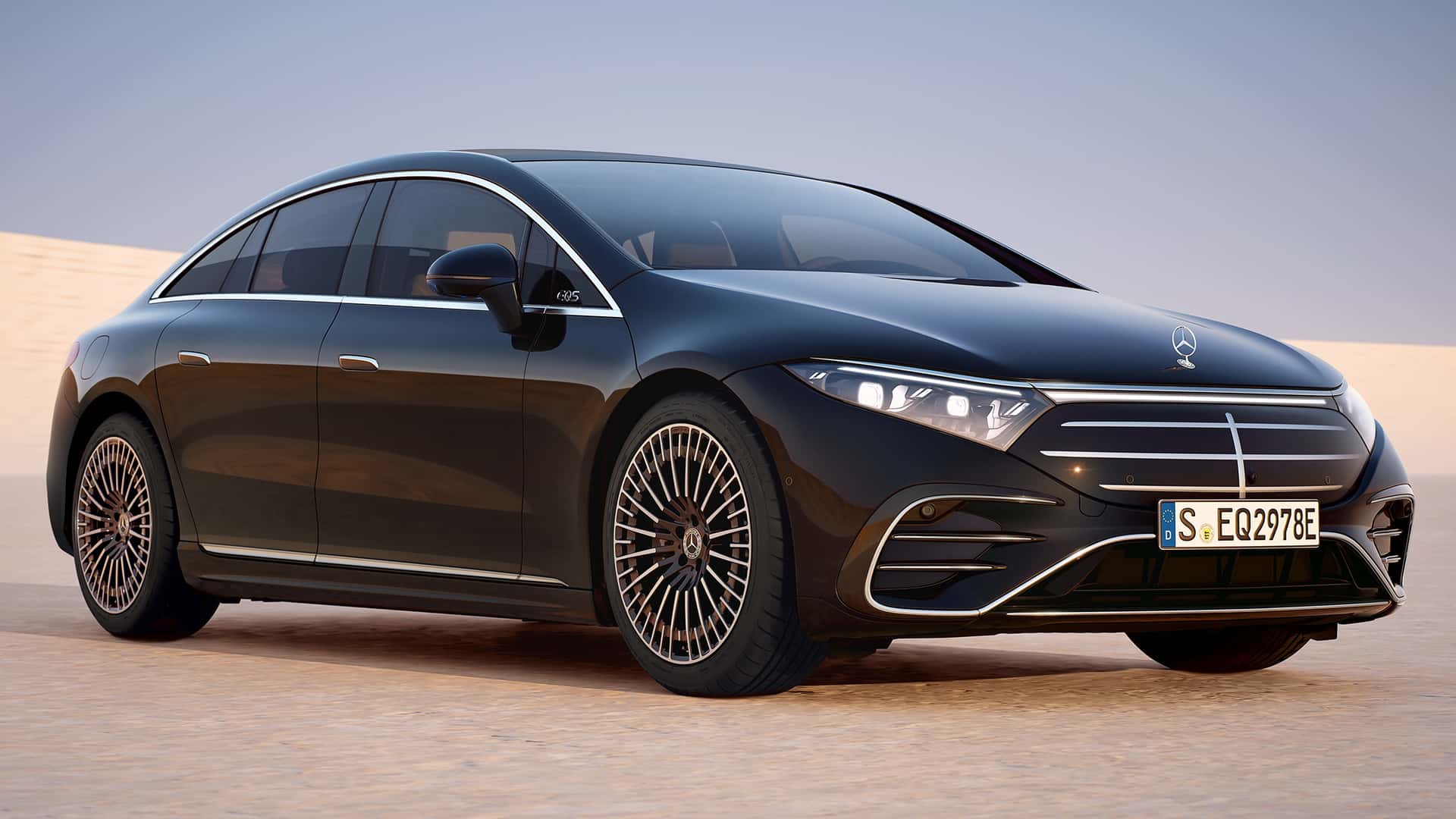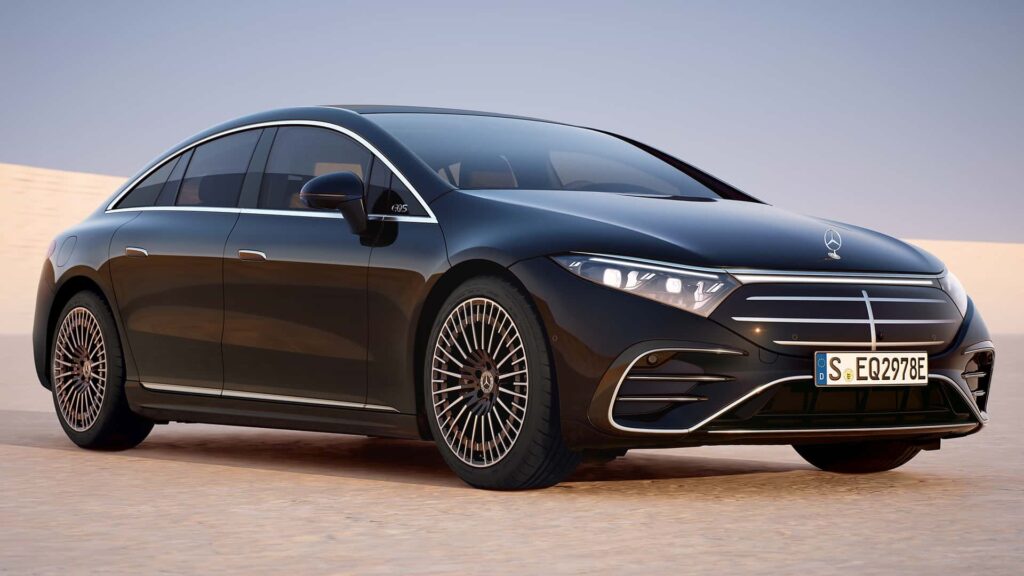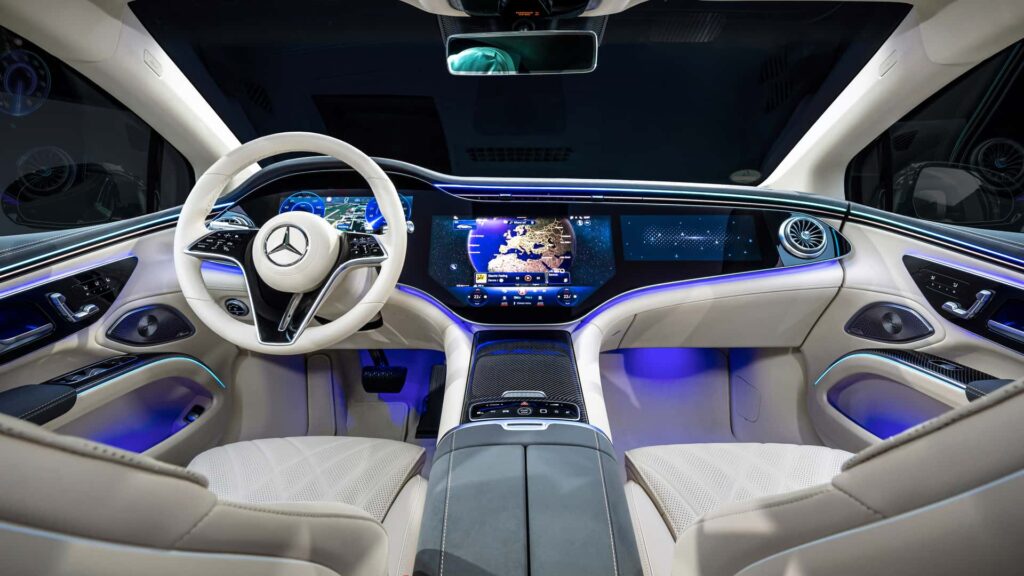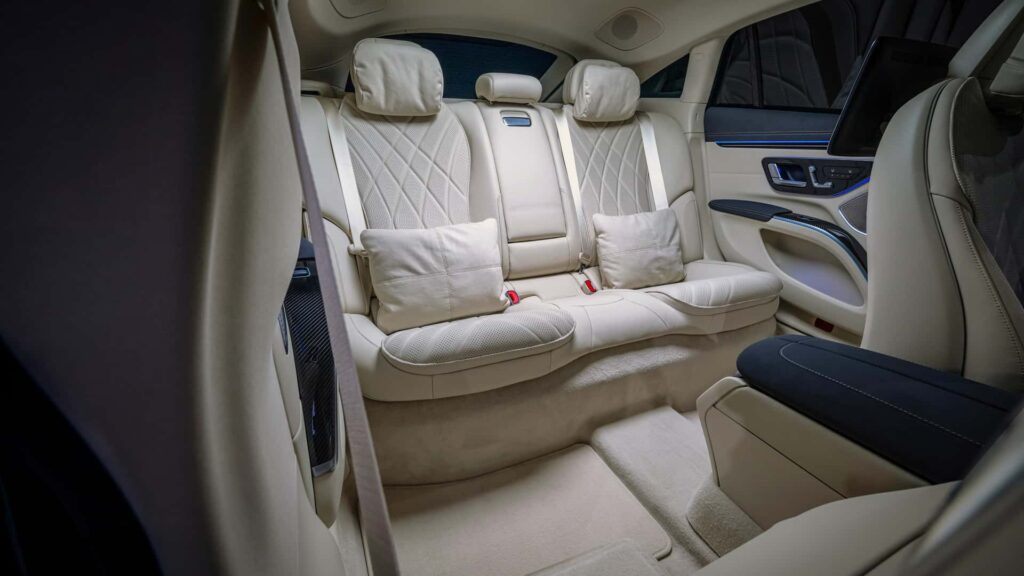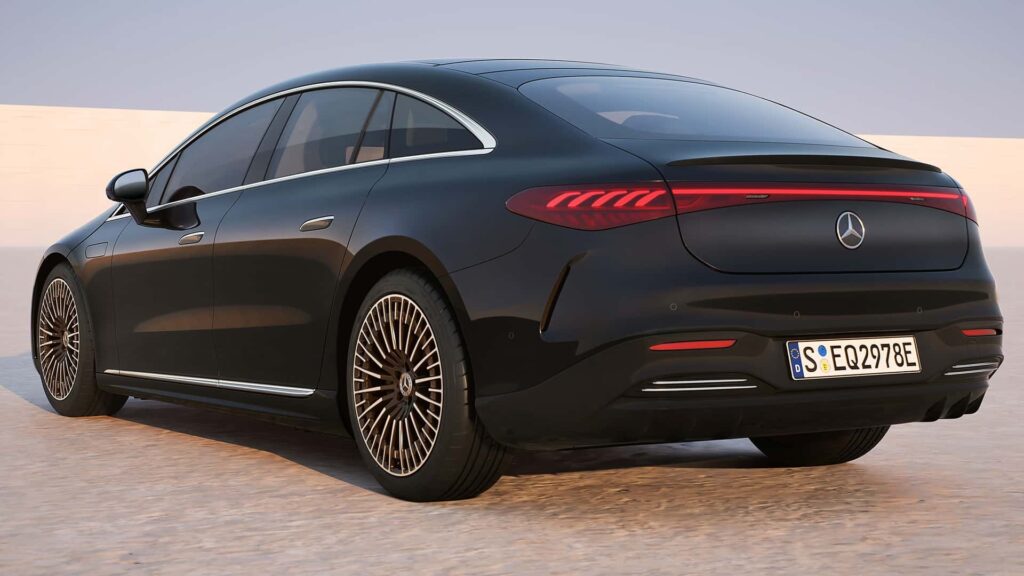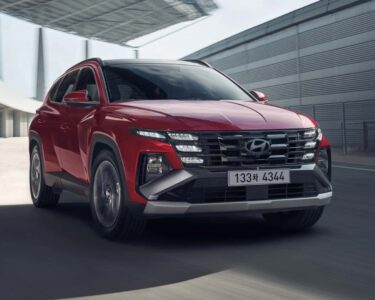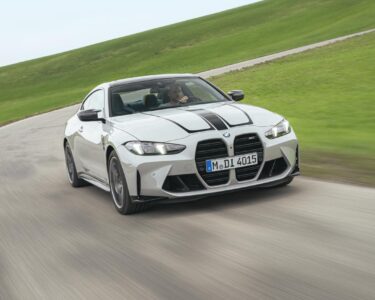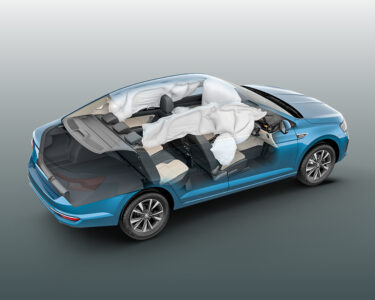Mercedes Benz officially revealed the facelift version of EQS. The flagship electric car now features a hint of S-Class inspiration. The most noticeable changes are found in the front fascia, where the EQS receives a redesigned faux grille with horizontal chrome slats, reminiscent of its combustion-powered counterpart, the S-Class. Additionally, a new standing star reminiscent of the traditional S-Class hood ornament adds a touch of elegance to the EQS’s exterior. While the exterior updates are subtle, they do include the integration of the AMG Line front bumper as standard, adding a sporty flair to the electric sedan’s appearance. However, the distinct egg-like silhouette that divided opinions remains unchanged, retaining the EQS’s unique identity.
Inside the cabin, Mercedes has made minor enhancements, such as the addition of chrome accents to the air vents on the B-pillars and upgraded detailing on the rear seat pillows, including contrast stitching and Nappa leather piping. Moreover, passengers can expect slightly improved comfort with the addition of 0.2 inches of foam to the rear seat backrests. Underneath the sleek bodywork lies an upgraded battery boasting a usable capacity of 118.0 kilowatt-hours, providing a boost in range compared to its predecessor.
The rear-wheel-drive EQS 450+ is now rated at an impressive 352 miles by the EPA, while the all-wheel-drive EQS 450 and 580 models offer 345 miles on a single charge. Even the performance-oriented AMG EQS manages a respectable 305 miles of range. Furthermore, Mercedes has enhanced the energy recuperation system, allowing the EQS to recharge its battery more efficiently while driving, thanks to new software for the regenerative braking system. This innovation not only extends the vehicle’s range but also reduces wear on the brake discs, as the pads are automatically applied periodically for maintenance, minimizing the need for traditional braking manoeuvres.

